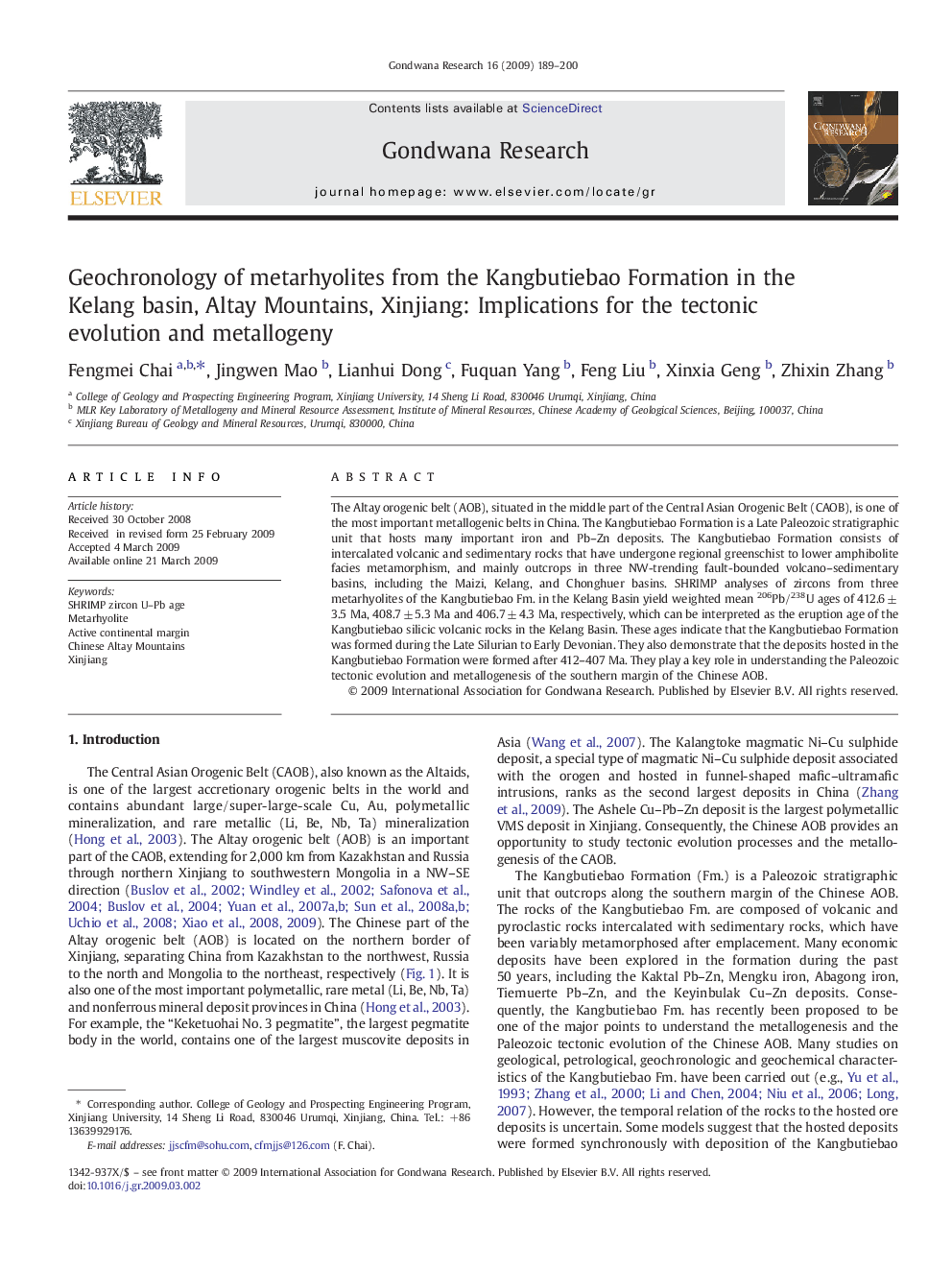| کد مقاله | کد نشریه | سال انتشار | مقاله انگلیسی | نسخه تمام متن |
|---|---|---|---|---|
| 4727480 | 1356380 | 2009 | 12 صفحه PDF | دانلود رایگان |

The Altay orogenic belt (AOB), situated in the middle part of the Central Asian Orogenic Belt (CAOB), is one of the most important metallogenic belts in China. The Kangbutiebao Formation is a Late Paleozoic stratigraphic unit that hosts many important iron and Pb–Zn deposits. The Kangbutiebao Formation consists of intercalated volcanic and sedimentary rocks that have undergone regional greenschist to lower amphibolite facies metamorphism, and mainly outcrops in three NW-trending fault-bounded volcano–sedimentary basins, including the Maizi, Kelang, and Chonghuer basins. SHRIMP analyses of zircons from three metarhyolites of the Kangbutiebao Fm. in the Kelang Basin yield weighted mean 206Pb/238U ages of 412.6 ± 3.5 Ma, 408.7 ± 5.3 Ma and 406.7 ± 4.3 Ma, respectively, which can be interpreted as the eruption age of the Kangbutiebao silicic volcanic rocks in the Kelang Basin. These ages indicate that the Kangbutiebao Formation was formed during the Late Silurian to Early Devonian. They also demonstrate that the deposits hosted in the Kangbutiebao Formation were formed after 412–407 Ma. They play a key role in understanding the Paleozoic tectonic evolution and metallogenesis of the southern margin of the Chinese AOB.
Journal: Gondwana Research - Volume 16, Issue 2, October 2009, Pages 189–200